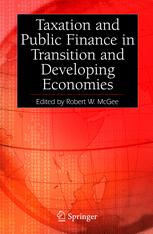

Most ebook files are in PDF format, so you can easily read them using various software such as Foxit Reader or directly on the Google Chrome browser.
Some ebook files are released by publishers in other formats such as .awz, .mobi, .epub, .fb2, etc. You may need to install specific software to read these formats on mobile/PC, such as Calibre.
Please read the tutorial at this link: https://ebookbell.com/faq
We offer FREE conversion to the popular formats you request; however, this may take some time. Therefore, right after payment, please email us, and we will try to provide the service as quickly as possible.
For some exceptional file formats or broken links (if any), please refrain from opening any disputes. Instead, email us first, and we will try to assist within a maximum of 6 hours.
EbookBell Team

5.0
60 reviewsMuch has been written about the economic and political problems of countries that are in the process of changing from centrally planned systems to market systems. Most studies have focused on the economic, legal, political and sociological problems these economies have had to face during the transition period. However, not much has been written about the dramatic changes that have to be made to the accounting and financial system of a transition economy. This book was written to help fill that gap.
Taxation and Public Finance in Transition and Developing Economies is the third in a series to examine accounting and financial system reform in transition economies. The first book used Russia as a case study. The second volume in the series examined some additional aspects of the reform in Russia and also looked at the accounting and financial system reform efforts that are being made in Ukraine, Bosnia & Herzegovina, Armenia, Eastern Europe and Central Asia.
The present volume examines taxation and public finance in transition and developing economies. It is divided into three parts. Part 1 consists of four general studies on various aspects of tax compliance, corruption, budget efficiency and fiscal policy. Part 2 includes nine comparative studies of various aspects of public finance. Part 3 consists of 23 country and regional studies of countries in Europe, Asia, Latin America and Africa.